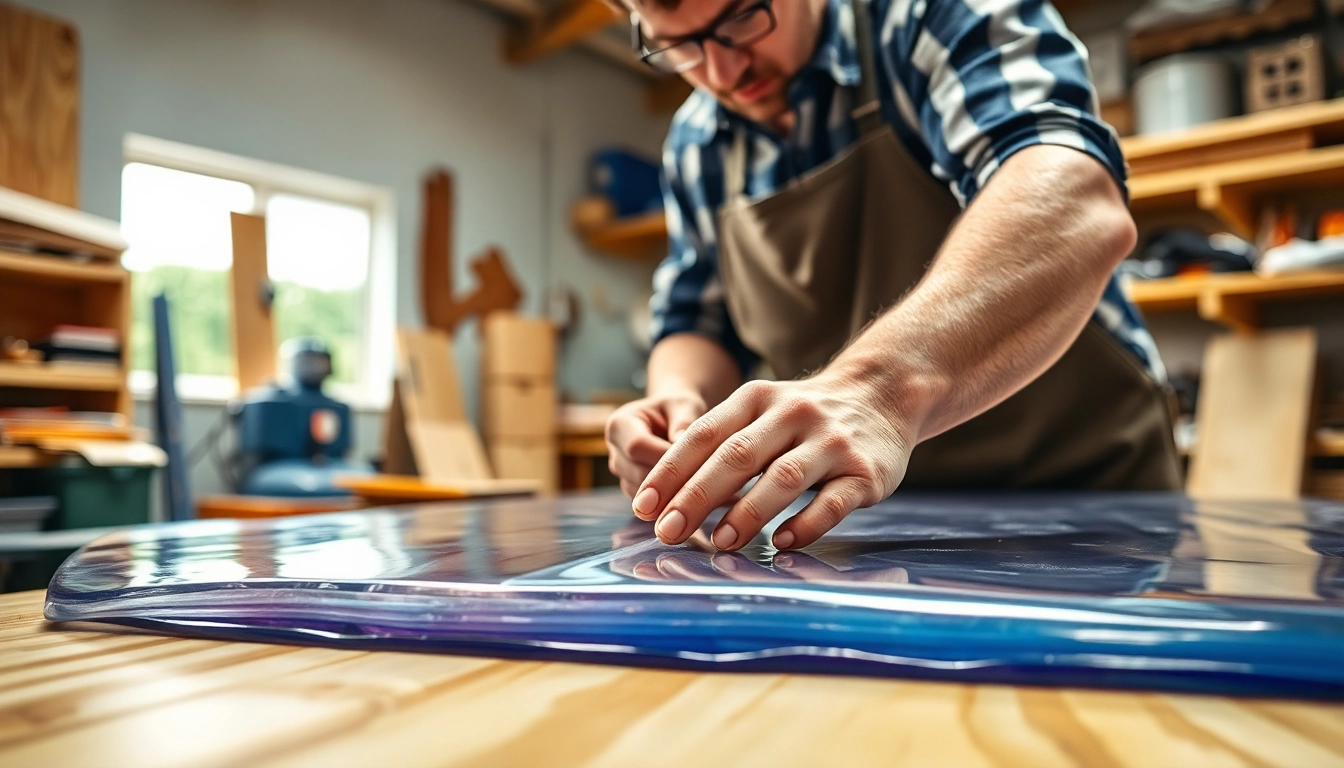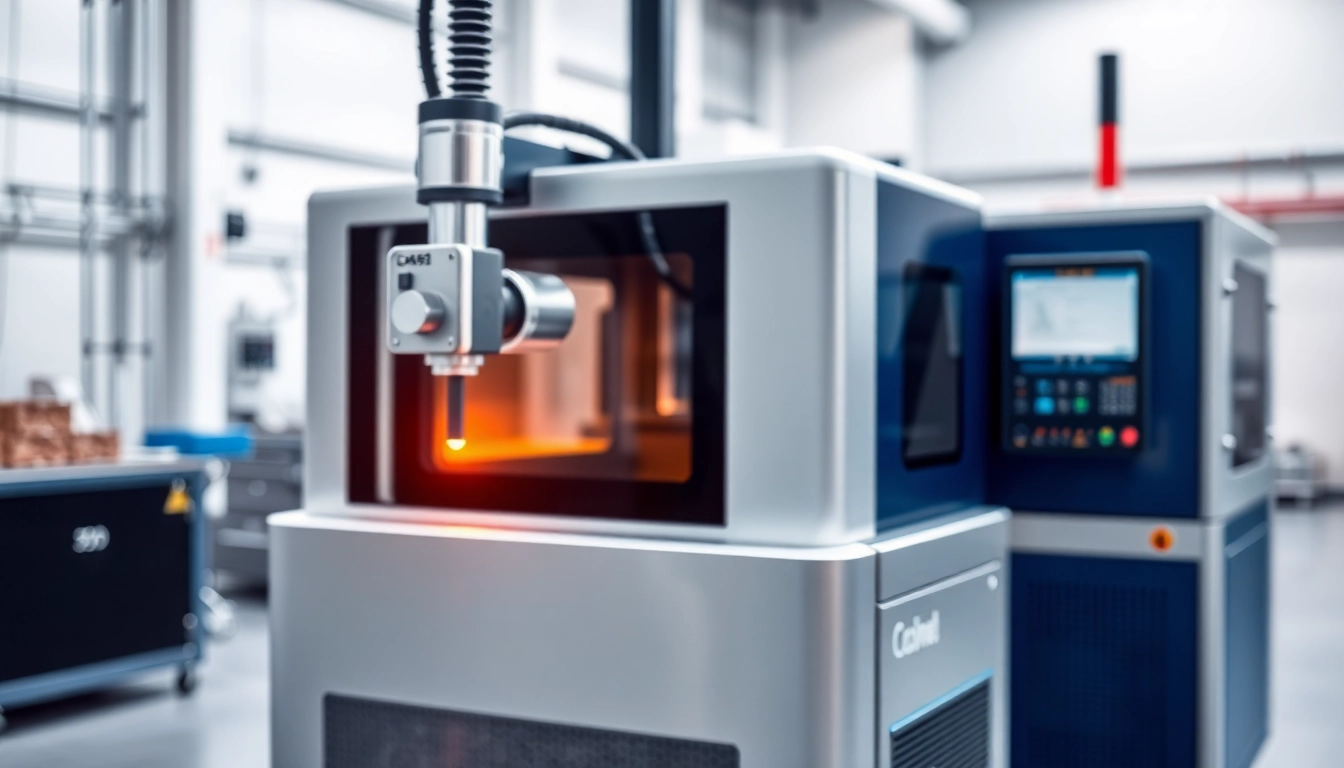What is Laminating Resin?
Definition and Purpose
Laminating resin is a specific type of resin designed for creating layered composites, primarily by bonding various materials together, such as fiberglass, wood, or other reinforcement fabrics. The primary purpose of laminating resin is to enhance structural integrity by providing a strong, protective layer that can withstand stress, moisture, and various environmental factors. This resin is pivotal in applications ranging from boat building to the production of automotive parts, as it effectively encapsulates fibers and imparts durability and rigidity to the finished product. Additionally, laminating resin plays a crucial role in achieving a seamless finish, which is essential for aesthetic and functional purposes in various projects.
Types of Laminating Resin
There are several types of laminating resins available, each suited for different applications and requirements. The most common types include:
- Polyester Laminating Resin: Known for its versatility, polyester resin is widely used in marine applications due to its ability to bond well with fiberglass. It is cost-effective and has good mechanical properties.
- Epoxy Laminating Resin: Epoxy resins are renowned for their superior strength and adhesion qualities. They are particularly effective in creating high-performance composites and are commonly used in the aerospace and automotive industries.
- Vinyl Ester Laminating Resin: A hybrid of epoxy and polyester, vinyl ester offers improved resistance to corrosion and heat. It is primarily utilized in industrial applications where higher performance is required.
Common Applications of Laminating Resin
Laminating resin is utilized across various sectors due to its diverse applications. Some of the most notable applications include:
- Boat Manufacturing: Laminating resin is crucial in building and repairing fiberglass boats, ensuring a durable and waterproof finish.
- Automotive Components: In the automotive industry, laminating resin is used to fabricate body panels and structural parts, providing strength while maintaining lightweight characteristics.
- Construction and Architectural Elements: Resins are also employed in construction for making durable window frames, doors, and even furniture.
- Sports Equipment: Many sports items, such as surfboards and bicycles, are produced with laminated composites for enhanced performance and durability.
Benefits of Using Laminating Resin
Strength and Durability
One of the most significant advantages of using laminating resin is the remarkable strength and durability it imparts to composite structures. By enveloping reinforcement materials like fiberglass, laminating resin contributes to the overall mechanical properties of the finished product. This strength ensures that the composites can withstand significant physical stress without compromising their structural integrity, making them suitable for heavy-duty applications.
Cost-Effectiveness and Versatility
Laminating resin is also celebrated for its cost-effectiveness. The materials used in conjunction with laminating resin, such as fiberglass, are relatively inexpensive compared to alternatives like metals or solid plastic forms. Furthermore, the versatility of laminating resin allows it to be used in multiple applications across various industries, maximizing its utility and minimizing waste.
Environmental Resistance
Another compelling benefit of laminating resin is its resistance to environmental factors. Many laminating resins are formulated to resist moisture, chemicals, UV radiation, and extreme temperatures, thereby ensuring longevity and performance in challenging conditions. This characteristic makes them ideal for marine applications and outdoor products.
How to Choose the Right Laminating Resin
Understanding Specifications
Choosing the right laminating resin involves a comprehensive understanding of the specific technical specifications pertinent to the project at hand. Users should consider factors such as viscosity, curing time, and mechanical properties of the resin. Understandably, different applications may require different performance metrics, such as tensile strength or flexibility, so it’s crucial to select a resin that meets those specific requirements.
Evaluating Project Requirements
Once the specifications are clear, evaluating the project’s specific needs is the next step in selecting a suitable laminating resin. This evaluation includes understanding load requirements, environmental exposure, and whether additional treatments or coatings are necessary post-application. Careful attention to these details can significantly influence the performance of the end product.
Comparison with Other Resin Types
It is also beneficial to compare laminating resin with alternative resin types, such as general-purpose or casting resins. Each type of resin has unique characteristics that affect its suitability for specific applications. For example, while casting resins may offer clarity and detail for small molds, laminating resins typically provide superior strength and adhesion in layered applications.
Application Techniques for Laminating Resin
Preparation and Safety Measures
Before applying laminating resin, proper preparation is essential to ensure optimal bonding and performance. This preparation includes ensuring surfaces are clean, dry, and free of contaminants. Additionally, it is vital to follow safety protocols, including wearing appropriate personal protective equipment (PPE) such as gloves, masks, and goggles, especially when working with volatile substances.
Mixing and Application Procedures
The mixing of laminating resin must be done carefully to achieve the correct ratio of resin to hardener. Most resin systems come with specific instructions on the mixing ratio, which should always be adhered to for optimal results. The application process can vary, but typically involves using brushes, rollers, or even spray guns to apply the resin evenly across the intended surface. Care should be taken to avoid bubbles during application, as these can compromise the structural integrity of the laminate.
Post-Application Care and Handling
After application, the curing process is critical. Laminating resins often require a specific ambient temperature and humidity level to cure effectively. Once cured, handling the composite with care is essential to avoid mechanical damage. It is also advisable to allow the laminate to fully cure before exposing it to any stress or environmental conditions.
Common Issues and Troubleshooting
Adhesion Problems
One of the most common issues encountered with laminating resin is poor adhesion. This problem can arise due to insufficient surface preparation, such as failing to clean or sand surfaces sufficiently. To mitigate this, ensure all surfaces are thoroughly prepared and consider using a suitable primer if necessary.
Bubbles and Defects
Bubbles and defects can occur during application and may be a sign of incorrect mixing, improper application technique, or environmental factors. If bubbles appear, they can often be eliminated by lightly rolling over the area with a roller or by using a heat gun at a safe distance to lightly warm the surface, allowing trapped air to escape.
Best Practices for Optimal Results
To achieve the best results with laminating resin, adhering to best practices is crucial. These include closely following manufacturer instructions, maintaining a clean working environment, and conducting small tests before large-scale application to evaluate performance. Consistent and methodical approaches can dramatically enhance the quality of the final product.



